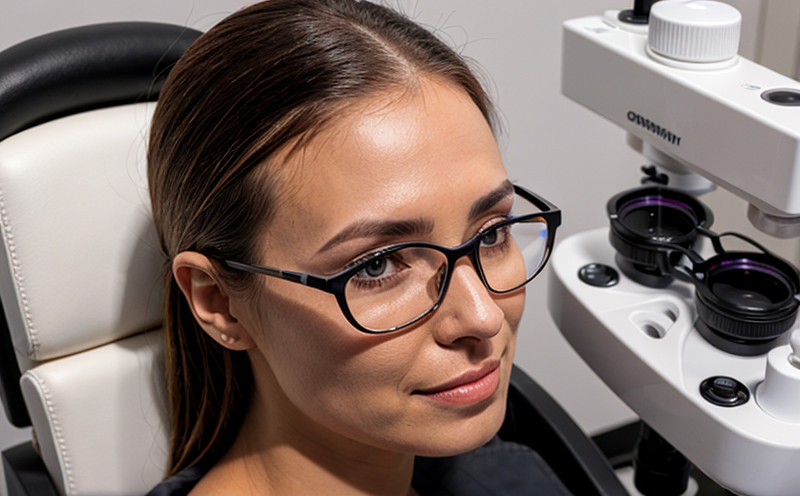EP Deliverable Volume Testing for Containers
The European Pharmacopoeia (Ph. Eur.) delivers comprehensive quality standards for pharmaceutical products, which include detailed specifications for containers used in packaging and handling these products. One of the key tests outlined is the "Deliverable Volume" test for containers, ensuring that the container can hold the required volume of a drug substance or product as specified by Ph. Eur.
This test is crucial because it ensures that the container does not affect the integrity and stability of the pharmaceutical product during storage and transportation. It also helps in maintaining the product's efficacy and safety throughout its shelf life. The test involves filling the container with a suitable liquid up to its labeled volume, then measuring the actual volume delivered after allowing for any compression or deformation.
The process typically begins by selecting the appropriate container based on the specifications from Ph. Eur. Once selected, the container is filled with deionized water (or another inert liquid) and placed in a controlled environment to reach equilibrium temperature. The container is then weighed before and after filling it to the specified volume.
After filling, any excess liquid is carefully removed, ensuring not to disturb the internal structure of the container. The container is then weighed again to determine the deliverable volume. The difference between these two weights provides an accurate measure of the deliverable volume. This process is critical for ensuring that containers meet the Ph. Eur.'s stringent requirements.
For glass containers, it's important to note that they can be more susceptible to deformation and compression compared to plastic or metal containers. Therefore, special care must be taken during the testing process to ensure accurate results. The use of standardized equipment and adherence to strict laboratory protocols are essential for consistent and reliable test outcomes.
The importance of this test cannot be overstated, especially in ensuring that pharmaceutical products meet regulatory requirements and maintain their quality throughout storage and distribution. Compliance with Ph. Eur. standards is crucial for the integrity of the supply chain and patient safety.
- Key Considerations: Ensure proper calibration of equipment, use appropriate liquids, and adhere to temperature control protocols.
- Container Selection: Choose containers that meet Ph. Eur. specifications for the intended product.
- Data Interpretation: Accurately measure before and after filling to ensure reliable results.
Benefits
The EP Deliverable Volume Testing for Containers service offers several significant benefits to pharmaceutical companies. Firstly, it ensures that the containers used in packaging meet the exact volume specifications required by Ph. Eur., thereby enhancing product quality and safety.
By conducting these tests, manufacturers can avoid potential issues such as under-filling or over-filling, which could lead to product contamination or loss of efficacy. This not only improves patient outcomes but also enhances brand reputation and consumer trust.
The service also aids in compliance with international standards, ensuring that products meet regulatory requirements both within the European Union and globally. This can help pharmaceutical companies expand into new markets without facing non-compliance issues.
Furthermore, regular testing of containers helps identify any manufacturing defects or variations early on, allowing for corrective actions to be taken promptly. This proactive approach reduces the risk of batch rejections and ensures a consistent supply chain.
Quality and Reliability Assurance
- Data Accuracy: Ensuring precise measurements and accurate data reporting to meet Ph. Eur. standards.
- Consistency: Maintaining consistent test results across multiple batches and containers.
- Rigorous Protocols: Adhering to strict laboratory protocols for container testing.
The service is designed to provide high-quality, reliable testing that ensures compliance with Ph. Eur. standards. By adhering to these stringent protocols and using state-of-the-art equipment, we guarantee accurate and consistent results every time. This not only helps in maintaining product quality but also enhances the overall reliability of the supply chain.
The use of advanced instrumentation and software solutions further ensures that our testing process is efficient and precise. We employ experienced professionals who are well-versed in Ph. Eur. standards, ensuring that we provide accurate and reliable test results every time.
Use Cases and Application Examples
The EP Deliverable Volume Testing for Containers service is particularly useful in various scenarios within the pharmaceutical industry. For instance, it can be used during the development phase to ensure that new container designs meet Ph. Eur. specifications.
In production, this test helps quality control teams verify that containers are not only meeting volume requirements but also maintaining their integrity and stability throughout storage and transportation. This is especially important for temperature-sensitive products where even minor deviations could lead to product degradation.
The service can also be applied during routine audits to ensure ongoing compliance with Ph. Eur. standards. Additionally, it serves as a valuable tool in supplier evaluations, helping companies select reliable partners who meet the required quality standards.
An example of its application is seen in a recent case where a pharmaceutical company was faced with discrepancies between labeled and deliverable volumes for one of their glass containers. By using our EP Deliverable Volume Testing service, they were able to identify the issue early on and make necessary adjustments before proceeding further in production.





